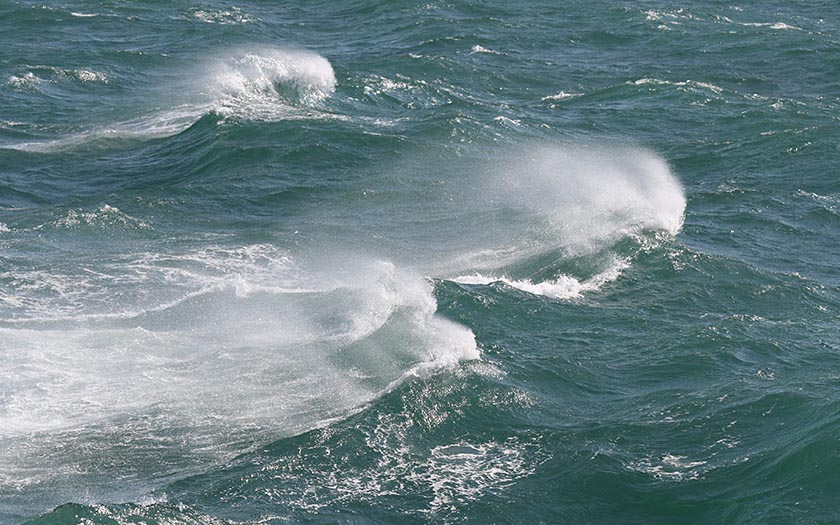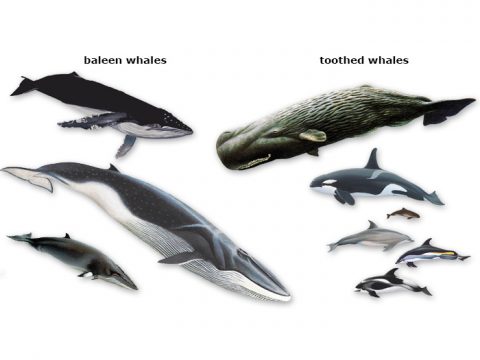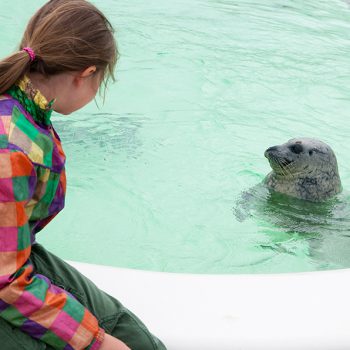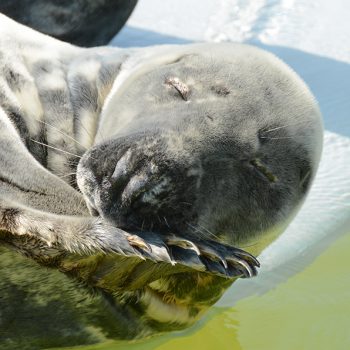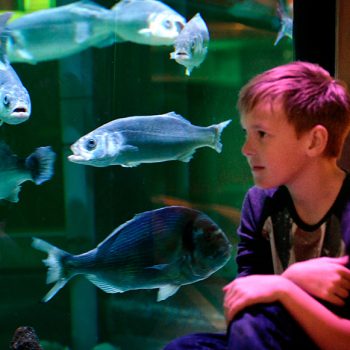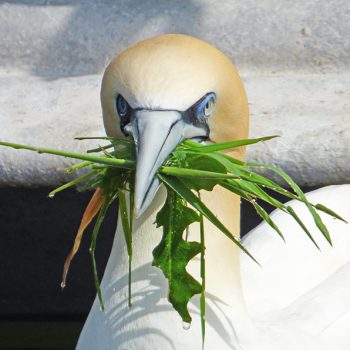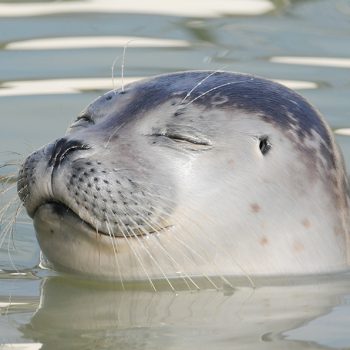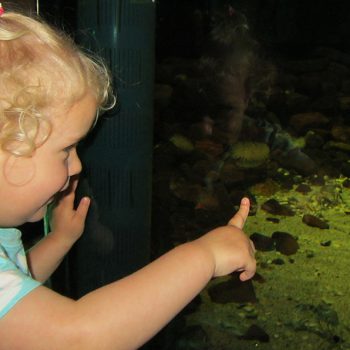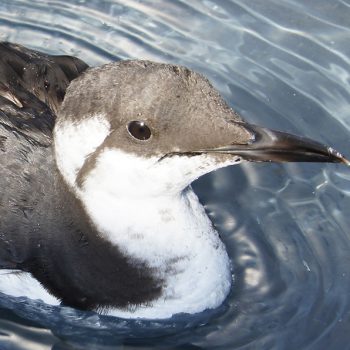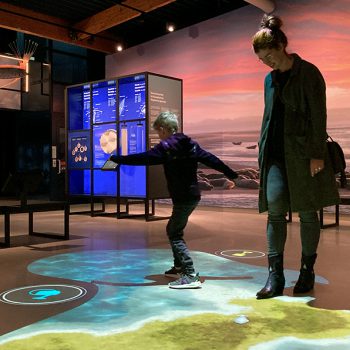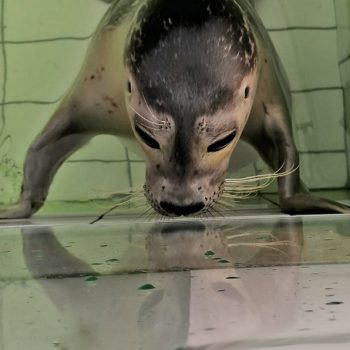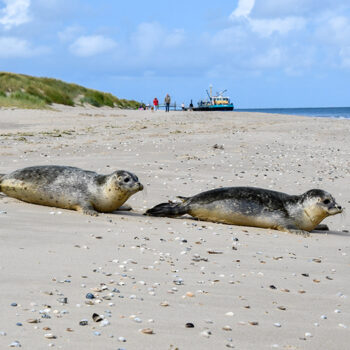The North Sea is the sea between Norway, Scotland, England, France, Belgium, the Netherlands, Germany and Denmark. The northern boundary is formed by an imaginary line between the Scottish Shetland and Orkney Islands and the Norwegian mainland. The lower boundary of the North Sea is the line between Calais in France and Dover in England. The North Sea is a rich nature area, but also very important for the fisheries, shipping and the energy sector.
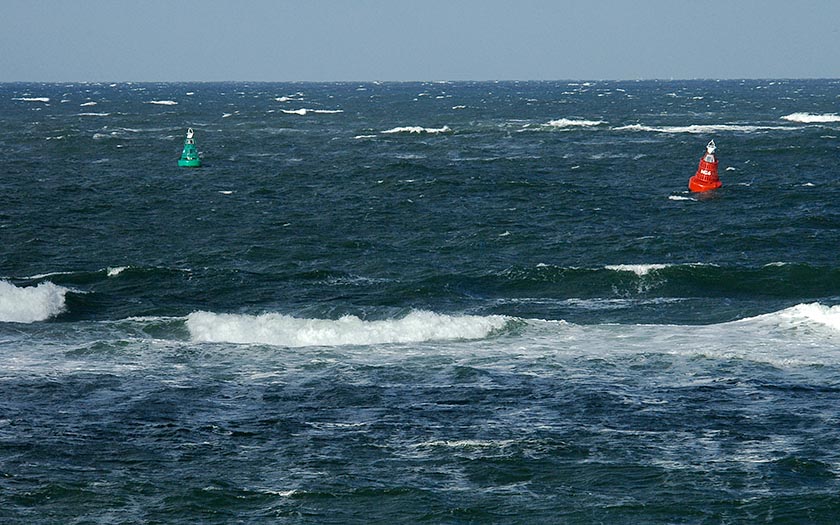
Transection of the North Sea
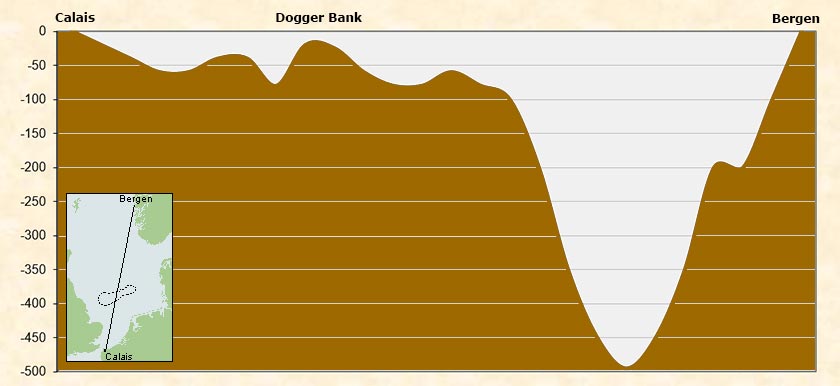
The North Sea grows gradually deeper in a northwesterly direction. The depth of the water distinguishes the southern, central and northern North Sea. The section south of Dogger Bank is no deeper than 50 meters at most places and belongs to the southern part. The North Sea north of this large shallow area down to a depth of 100 meters belongs to the central section. And the more northerly lying region with depths up to 200 meters is called the northern North Sea. The Norwegian Trench and the Skagerrak form the fourth section of the North Sea.
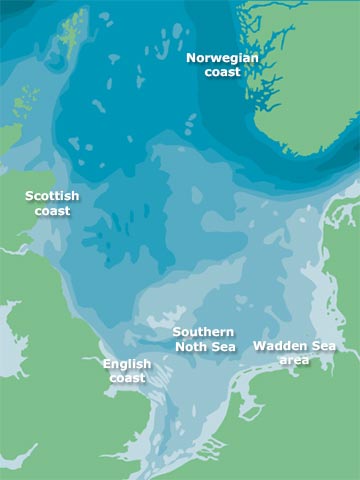
Supply of water for the North Sea
The North Sea is supplied with water via several different sources. Every year, 5000 cubic kilometres of water from the Atlantic Ocean flows via the English Channel between England and France into the North Sea. At least 50,000 km2 ocean water enters via the northern entrance by the Shetland Islands. The Baltic Sea delivers 500 km2 of brackish water yearly and the various rivers contribute 300 km2 of fresh water. All the water in the North Sea is refreshed once every two years. Precipitation and evaporation keep each other in balance: 500 millimeter per year evaporates and approximately the same amount is precipitates.
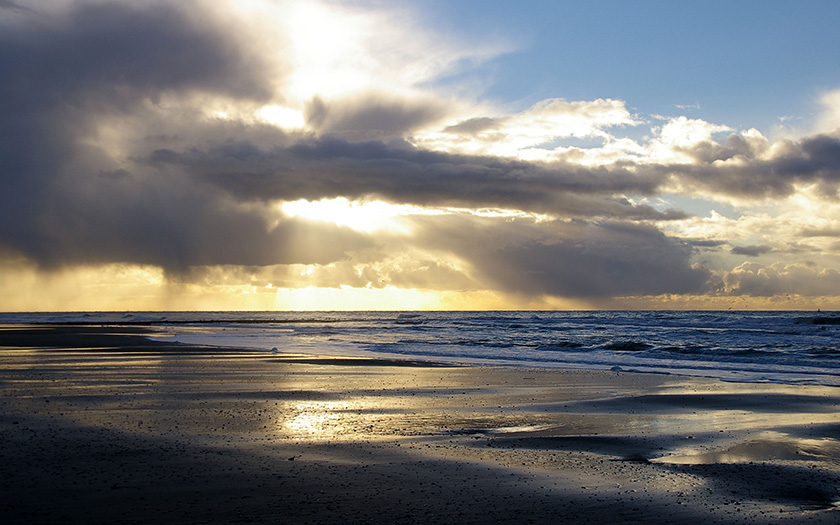
North Sea, coastal sea
The North Sea, just like most coastal seas, is particularly rich in nutrients. These are transported by the rivers from the land. In addition, due to its shallowness, sunlight can penetrate to the bottom almost everywhere. This allows for planktonic plants to live in large abundance in the North Sea. This overabundance on plant materials provides sufficient food for maintaining the many types of organisms in the North Sea. The North Sea also has many coastal areas which are even richer in nutrients; the best example of this is the Wadden Sea.
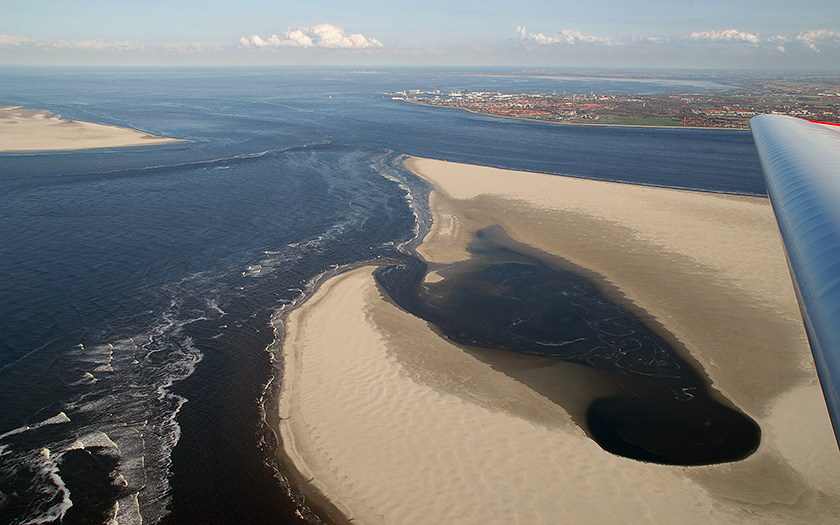
Natural processes
The sea is alive. Due to the climate, the tides, the sea currents and the supply of water from the rivers, the sea is continually subject to changes. Life in the sea has adapted to this. The ecosystem of the North Sea is so complex that scientists still regularly run into puzzles: for example, the fish stocks remain unpredictable year after year.
